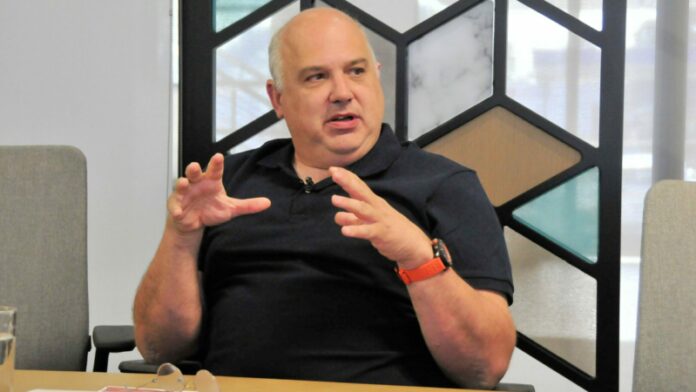
IT looks like there is some life returning to the junior mining sector in Southern Africa but not much of it is coming the way of South Africa, although the listing of two mining juniors on the JSE over the past year made for some good news.
Those were Southern Palladium and Copper360, and there could be another two listings bound for the JSE in the next year or so. Those might be Blyvoor Gold and Marula Mining.
Marula is in the process of listing on London’s AIM market, but CEO Jason Brewer told the Junior Indaba conference in June that he was keen to strengthen his company’s base in Africa and was looking at listings in Nairobi and on the JSE.
Blyvoor Gold is the ‘swansong’ project developed by serial mining entrepreneur Peter Skeat, who died in late March just as underground operations at the restructured mine formerly known as Blyvooruitzicht were getting back into full swing.
Skeat told Miningmx that when he bought the mine out of liquidation in 2016, he knew this would be his last project and he intended to make sure he developed it “right” – which meant he had no intention of bringing in partners as he had done with past developments.
Skeat’s career was one of innovation in spotting and grabbing overlooked opportunities but time and again these developments were marred by subsequent infighting with his partners.
The classic example is Ergo, over which Skeat fell out with his Australian partner Brian Frost and listed Australian junior Mintails. The project ended up wholly owned by DRDGold, which has made a stunning success of it, turning Ergo into its flagship operation.
This year’s Junior Indaba threw up a number of differing opinions on where to go mining in Africa as companies talked up their projects.
Copper360 CEO Jan Nelson waxed lyrical about the benefits of developing his copper company near Springbok in the Northern Cape despite the issues with Eskom, while Andrada Mining (formerly Afritin) CEO Anthony Viljoen did the same for Namibia.
That was despite the Namibian government’s recent comments that it wanted to take a stake in all mining operations in the country. That caused a plunge in Namibian-based mining company stock prices, in particular uranium miner Paladin, which wants to restart its mothballed mine in the county. But the Namibian government subsequently clarified its stance to say it wanted a stake only in new mining operations; existing ones would not be affected.
According to Viljoen, the Namibian government had a habit of “saying the wrong things but subsequently doing the right things”, to which conference host Bernard Swanepoel replied that he had heard various South African government officials “saying the right things” but the government then did “incredibly stupid things”.
Also singing Namibia’s praises was Ubique Minerals CEO Vilhjalmur Thor Vilhjalmsson, who described the country as being “like Africa for sissies. We are very happy there.”
Then there’s diamond explorer Botswana Diamonds (BOD), which operates in both Botswana and South Africa but will not go into Zimbabwe despite the assessment from CEO James Campbell that the country is highly prospective. He said BOD would love to get into Zimbabwe but it was not going to do so under the restrictions imposed on diamond producers by the current Zimbabwean government.
For South African investors the bottom line remains depressingly familiar. South Africa is a very difficult country for junior miners to operate in, with an ongoing litany of problems concerning the regulatory framework that remain unresolved while most of the few juniors actually operating in the country are not listed on the JSE.
The most glaring regulatory deficiency of them all – a new cadastral system that is a fundamental requirement for a working national exploration programme – has still not been provided some four years after South African mines minister Gwede Mantashe admitted the existing Samrad (South African Mineral Resources Administration System) was useless and had to be replaced as a priority.
A recent development was that director general of the Department of Mineral Resources and Energy (DMRE) Jacob Mbele told the conference that a service provider to install a mining licence cadastre would be appointed in July. There was still no indication of when the system would actually come into operation.
Regarding the longstanding backlog of licence and permit applications, Mbele said: “What I can indicate is that we are moving at speed. We are now focusing on cutting the backlog in Mpumalanga and the Northern Cape. At the end of the financial year [March 2024] we hope to reduce the backlog entirely.”
Assuming that target is actually achieved it has come too late for some mining entrepreneurs, who have simply given up because of the delays and the amount of red tape involved in getting an exploration licence.
One of them is Andrada’s Viljoen, who told the conference he had handed back promising-looking prospecting rights around the former Zaaiplaats tin mine and moved to Namibia because of the delays in South Africa.
For those investors interested in junior miners, the reality is that if you want shares in companies like BOD or Rainbow Rare Earths, which is developing a rare earth project at Phalaborwa, then you have to buy them on the London Stock Exchange.
What I can indicate is that we are moving at speed. We are now focusing on cutting the backlog in Mpumalanga and the Northern Cape – Jacob Mbele.
Asked by Swanepoel why BOD was listed in London and on the Botswana Stock Exchange but not on the JSE, Campbell replied it was because the company had found that raising money on the JSE was extremely difficult.
He said BOD got most of its financial backing from investors in London who were prepared to accept a greater degree of risk than South African investors.
The longstanding reason for that is held to be the historical structure of the South African mining industry, which has been dominated by major mining groups for more than a century. South African investors are simply not comfortable putting money into juniors with uncertain futures.
Where it gets interesting is that it is clear BOD has not given up on its aim of getting hold of the mothballed Ghaghoo diamond mine, owned by Gem Diamonds, in Botswana’s central Kalahari Desert.
BOD tried and failed to buy Ghaghoo two years ago in a joint venture with Vast Resources that collapsed when Vast pulled out. Ghaghoo is widely described by diamond analysts as a “total dog” but it seems BOD may now have a private investor interested in getting involved.
Campbell remained tight-lipped on this at the conference, pointing out only that “diamond expert” conventional wisdom on the AK6 pipe developed by himself and partner John Teeling was also that it was a marginal proposition. AK6 is now the highly successful Karowe mine owned by Lucara Diamonds.
But it is worth keeping in mind Teeling’s famous assessment that “high risk, high reward” means investors will most likely lose their money.
For an example of that, look no further than Orion Minerals – the JSE and ASX junior looking to reopen the former Prieska Copper mine in the Northern Cape. That share price has dropped 84% on the JSE from around 160c in late 2018 to 25c currently. BOD is in the same boat, having dropped 85% from 6.75p in 2011 to 1p currently.
The clear message is that junior mining is not for sissies, even if the DMRE eventually gets its act together, installs a working cadastre system, deals with corruption in its regional offices and chops back on the red tape that entrepreneurs say is stifling prospecting and new mining development.
This article first appeared in The Mining Yearbook.









